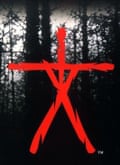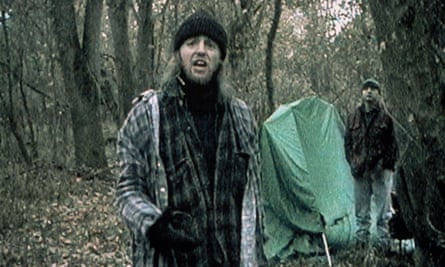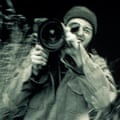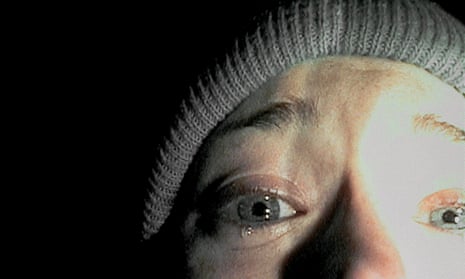Daniel Myrick, co-director

I grew up around the woods and swamps of Florida. For a long time, I had this idea of seeing a stick figure hanging from a tree and it creeped the hell out of me. Ed Sánchez, a friend from university who ended up co-directing, helped me work this into a 35-page treatment about three students who go missing after heading out into the Maryland woods to make a documentary about a legendary witch. The idea was that this film was put together later, using the footage they shot. In the late 90s, with digital coming into its own, it was only a matter of time before someone made this kind of first-person movie.
The treatment covered what happens, but it had no dialogue – we wanted it all improvised. The original plan was for it to be three guys, but we had to cast Heather Donahue after what happened during her audition. We asked actors to pretend to be at a parole hearing and explain why they should be released. She said: “I probably shouldn’t be released.”
We set up a base at a house in Germantown, Maryland, that Ed shared with his girlfriend. There were 10 to 15 of us there for six weeks, sleeping on couches and on the floor. The shoot took eight days and was a 24/7 operation. It wasn’t like a normal film: the actors would work the cameras, filming each other all the time. Using GPS, we directed them to locations marked with flags or milk crates, where they’d leave their footage and pick up food and our directing notes.
These would say things like: “Heather, you’re absolutely sure that to get out of this mess you go south. Don’t take no for an answer.” Or: “Josh, somewhere along the way today, you’ve had it with this bullshit.” They had the freedom to decide how to play it: we only intervened if we felt they needed to tone things down. Then there were the “gags” we’d pull at night that they had to react to – like hearing the children’s voices, or feeling the tent being shaken.
It cost about $35,000 (£26,000) to get all the footage shot. We already had some buzz going into the Sundance film festival, partly because of the website we built suggesting our student documentary-makers really had disappeared. I got a call from a New York police officer who had worked in Maryland for years and wanted to help. I had to tell him it was all fake. There was a queue around the block and out into the parking lot for the first Sundance screening. The next thing we knew, [film studio] Artisan had bought the movie for $1m. All in, it cost about $300,000 – and it made nearly $250m worldwide. Not too many movies have had such a cultural influence. It popularised the found-footage approach, for better or for worse. There’s a common misunderstanding that not a lot went into it, but it took two years of effort to make it look like it was just shot by three students over a long weekend.

Joshua Leonard, actor
Heather’s parents were worried Ed and Dan might be taking her out into the woods to make a snuff movie. I was up for any kind of adventure back then, so said yes when the two of them asked me to play the cameraman. Tensions got high, we got hungry, we got uncomfortable and we hurt each other’s feelings. So we came up with a safe word for whenever we had to break character and remind ourselves this was just a job: taco. We regretted that by about day three. It just kept reminding us how hungry we were.
At the time, I felt bad about my final attack on Heather – when I turn the camera on her and yell at her about what her motivation is. It was me, expressing frustration as both a character and an actor, but it worked on another level: the idea of us all as performers. The film was inadvertently prescient about the idea of 15 minutes of fame.

The fear level on the night-time interventions wasn’t actually that high. Your body would have finally warmed up the sleeping bag enough for you to fall asleep, then you’d hear baby noises outside. It was more annoying than anything else: we’ve got to act now. My character got killed first, so I took a really long shower, got stoned and went to Denny’s.
We went from total anonymity to the cover of Newsweek in a very short time. Artisan played the real-life disappearance angle as much as possible. We were specifically not invited to the Cannes premiere and, for a while, were listed as deceased on IMDb. Our parents started getting condolence calls. There are people who still don’t believe it’s fiction. I sometimes think Artisan would have been happier if we had actually been dead.

Comments (…)
Sign in or create your Guardian account to join the discussion